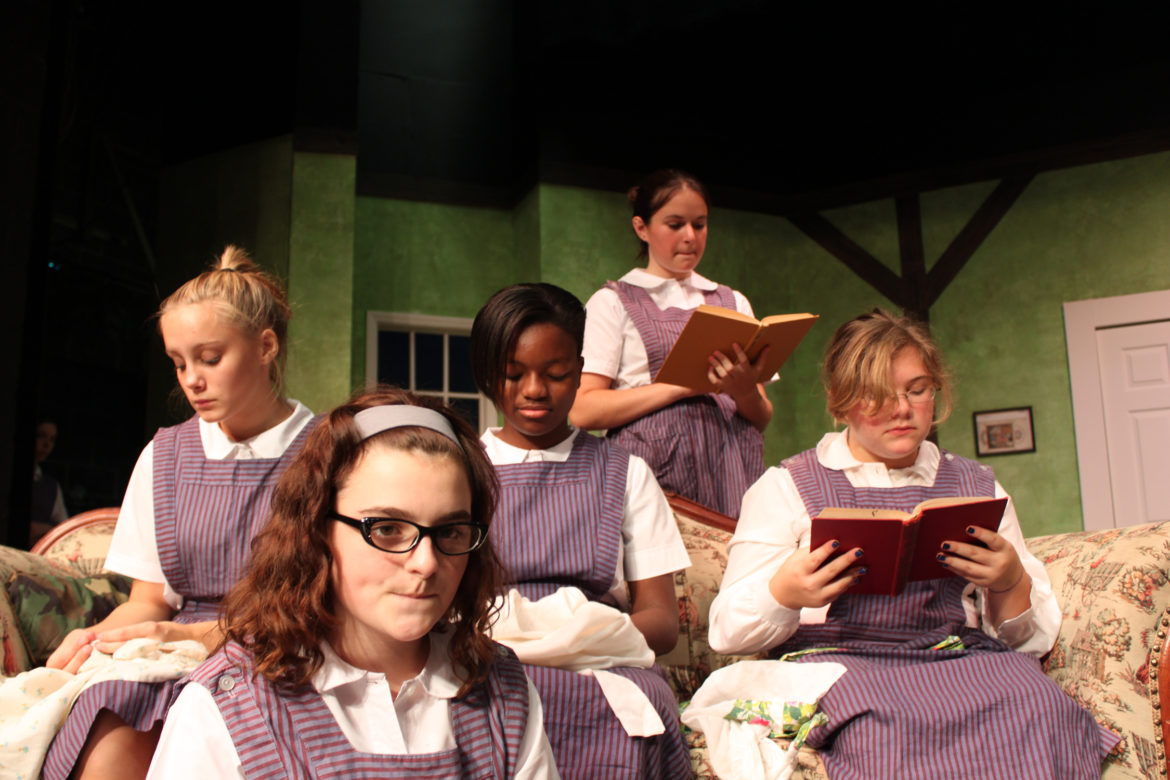Lillian Hellman’s most famous play, THE CHILDREN’S HOUR, proudly opened on September 17th, at the Wilmington Drama League (WDL) theater and will run through October 2nd. The play, Hellman’s first, had its premier performance in New York on November 20th, 1934, featuring relatively unknown actors and was an immediate success running for 691 performances. During the play’s early history it received quite a lot of press, and due to its then perceived controversial theme was for a time banned in Boston, Chicago and London.
The initial action of the play takes place in a girls’ boarding school run by two young women, Martha Dobie and Karen Wright, who first met as friends attending college ten years earlier. Carol Casarino, the director of the WDL production, describes THE CHILDREN’S HOUR as “all about the destructive power of a lie.” However, it is the subject about which the lie is told that created controversy during the play’s early history. So much so, that Hellman yielded to pressure from Hollywood and altered the nature of the lie, as well as the play’s title, in her script for the 1936 acclaimed release of THESE THREE, a movie version of her play starring Merle Oberon and Joel McCrea.

(l. to r.) Sara Remmell, Taylor Staub (on floor), Amber Simmons, Gabriela Hammond (standing), Bevan Fields are the students of Wilmington Drama League's production of Lillian Hellman's THE CHILDREN'S HOUR. (Photo credit: Chris Turner)
It wasn’t until the 1952 revival of the play at New York’s Coronet Theater that the original plot was restored for a five-month run starring Kim Hunter and Patricia Neal. And in 1961, with the help of screenwriter, John Michael Hayes, Hellman’s original plot for THE CHILDREN’S HOUR was brought to the big screen in the movie by the same name directed by William Wyler and starring Audrey Hepburn, Shirley MacLaine and James Garner.
As performed by WDL on opening night, THE CHILDREN’S HOUR continues to deliver an absorbing drama that will surely leave audiences talking and thinking about the central characters long after the curtain calls. Taking on the roles of Karen Wright and Martha Dobie are Tricia LaRock and Meghan Hindmarch, both of whom provide convincing and, at times, deeply moving portrayals of two young business partners running the boarding school who tragically fall prey to deceit perpetrated by a pathologically manipulative student seeking revenge for what she perceives as unfair treatment. Capturing the controlling and spiteful temperament of Mary Tilford, the student who sets in motion the dramatic events that comprise this still relevant story, is Casey Moore, who at thirteen years old gives the audience a forceful performance.
Another young actress is Taylor Staub, who does a fine job playing the hapless Rosalie, a fellow student who struggles in vain to distance herself from Mary, only to become equally complicit in the devastating lie. Susan Austin plays well the sadly flamboyant Lily Mortar, Martha’s aunt who has been doing her best to help out with teaching duties, and who also becomes quite central in the unfolding tragic circumstances. A solid performance is given by Patrick O’Hara as Dr. Joseph Cardin, Karen’s fiance. Also fun to watch is Kizzy Saunders, who as Agatha, the maid serving in Mary’s grandmother’s house, is the only one who seems to see through Mary’s manipulations, but is powerless to make a difference. As Amilia Tilford, Mary’s influential, gullible and tragically reactionary grandmother, Fa Lane Fields gingerly walks a thin line between the all too easily duped adult in this drama who should know better and the subsequently genuinely remorseful broadcaster of Mary’s lies.
The tendency to rush, almost mechanically, through the first act, which is nearly all exposition, and features other young actresses portraying Mary’s unassuming schoolmates, is unfortunate. By the second act the action of the play is clearly picking up and carrying the audience along with the intensifying developments of the story. The third act is where the action building during the first two acts all unfolds. The depth and scope of the tragic circumstances are ably portrayed by all performers who struggle to make some sense of their lives within the contexts in which they are each now hopelessly enmeshed. A caution here for the actors who are clearly fully immersed in their roles is to not forget that a critically important part of the actor’s job is to be heard by the entire audience.
This is overall, a well-performed play and one that continues to be relevant in many ways given the ease with which damaging rumors remain today as instrumental in unfairly hurting others as they did in Lillian Hellman’s day. Despite the title, it is not a play for young children, due to the adult themes around which the story is centered. However, the controversial aspects of the story are much less shocking today than they were 76 years ago, though no less compelling.
THE CHILDREN’S HOUR
by Lillian Hellman
Directed by Carol Casarino
September 17 – October 2, 2010
Wilmington Drama League
10 West Lea Blvd.
Wilmington, DE
302-764-1172
www.wilmingtondramaleague.org


